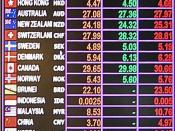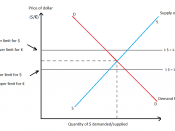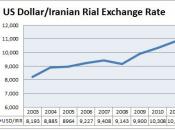214
CHAPTER 10 The International Monetary System
The sole purpose of the international monetary system is to facilitate internationaleconomic exchange. Most countries have national currencies that are not generally accepted as legal payment outside their borders. You wouldn't get very far, for example, if you tried to use dollars to purchase a pint of ale in a London pub. If you want this pint, you have to first exchange your dollars for British pounds. If you are an American car dealer trying to import Volkswagens for your dealership, you will need to find some way to exchange your dollars for euros. If you are an American trying to purchase shares in a Japanese company, you will have to find some way to acquire Japanese yen. Distinct national currencies thus may pose an important obstacle to international trade and financial transactions. International transactions are possible only with an inexpensive means of exchanging one national currency for another. The international monetary system's primary function is to provide this mechanism. When the system functions smoothly, international trade and investment can flourish; when the system functions poorly, or when it collapses completely (as it did in the early 1930s), international trade and investment grind to a halt.
The purpose of the international monetary system is simple, but the factors that determine how it works are more complex. For example, how many dollars it costs an American tourist to buy a British pound, a euro, or 100 Japanese yen (or any other for- eign currency) is determined by the sum total of the millions of international transac- tions that Americans conduct with the rest of the world. Moreover, for these currency prices to remain stable from one month to the next, the United States must somehow ensure that the value of the goods, services, and...


